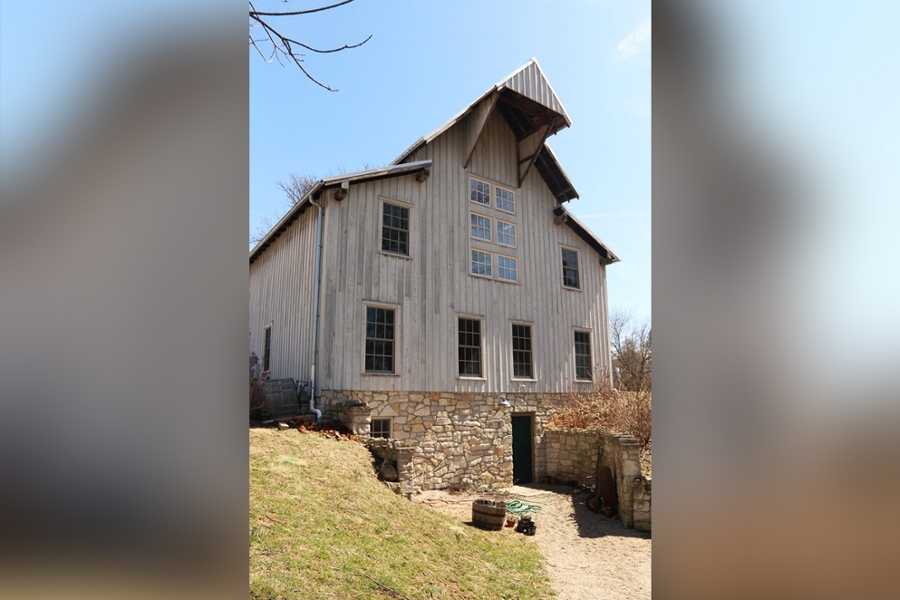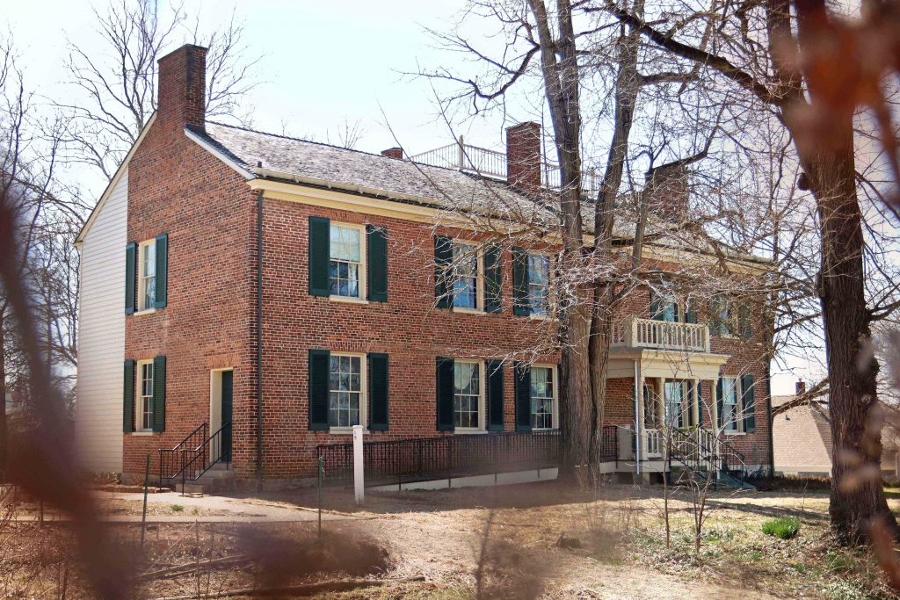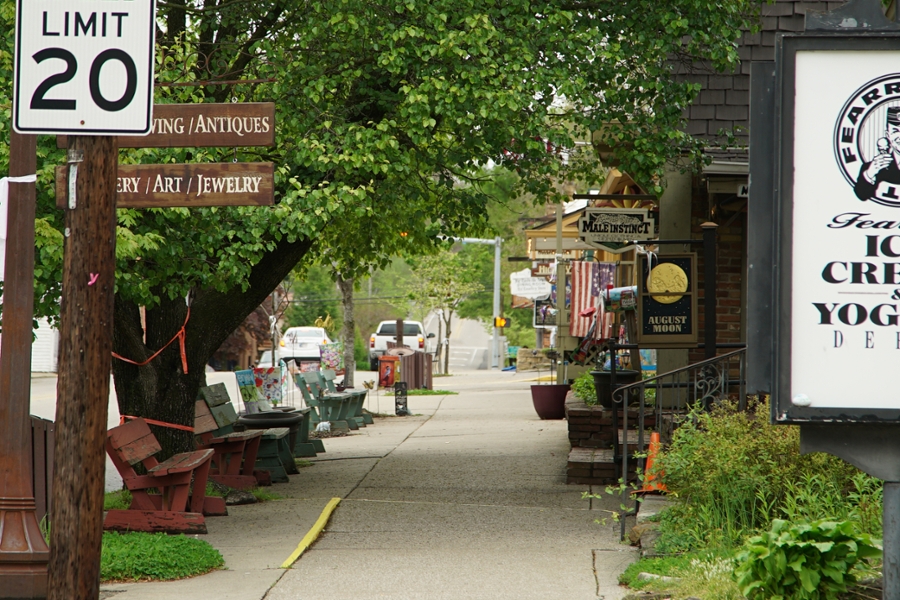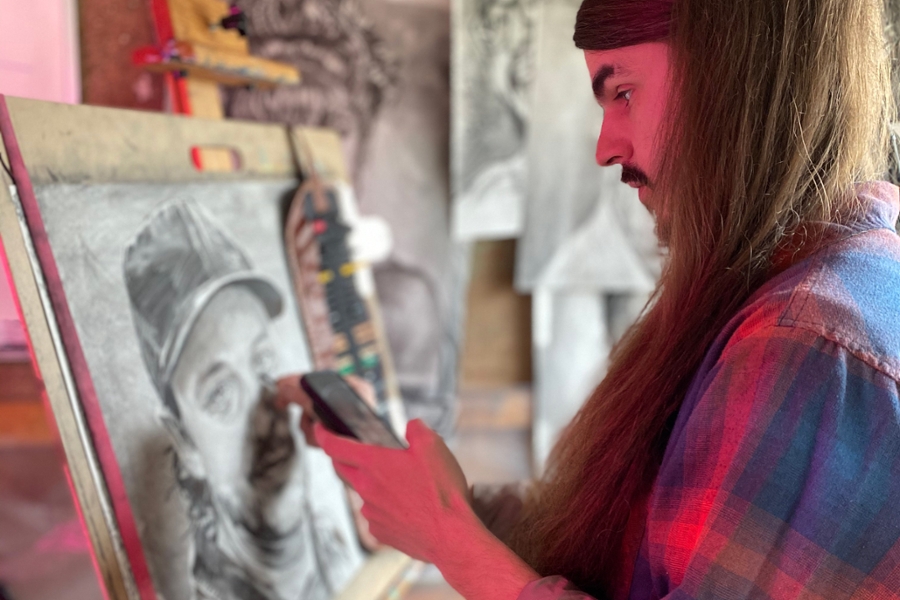This is part one of a series highlighting the museums located in Bloomington, Indiana.
A lot has changed in Bloomington since the 1800s and the Wylie House has seen it all. Built by Indiana University’s first President, Andrew Wylie, the two-story brick home has housed famous educators, students and bared witness to historical technological advances.
Andrew Wylie
Andrew Wylie was born in 1789 to Scottish immigrant farmers who had moved from Ireland to Pennsylvania. The family was raised Presbyterian and Andrew received a mix of education from home and through Washington County local schools.
In 1804, at the age of 15, Wylie entered Jefferson College and graduated with honors six years later. By 1811, just one year after graduating, he was unanimously elected as President of his alma mater.
Two years later he married Margaret Ritchie, the daughter of a wealthy Canonsburg merchant, and became an ordained Presbyterian minister. He also led the effort to combine Jefferson College with neighboring Washington College.
That controversial merger was unsuccessful and so in 1816 he left his post at Jefferson College to take up his new position as President of Washington college. That year he also became the pastor of the Presbyterian church.
(The two colleges did eventually merge in 1865 and still exists today as Washington & Jefferson College.)
Indiana Frontier
Meanwhile, in the frontier land of Bloomington, IN, David H. Maxwell, a physician and legislator formerly from Kentucky, was witnessing Indiana gain its statehood. As a delegate, he helped write Indiana’s first constitution and now that they had been accepted into the Union, he hoped to see education opportunities in the area increase.
Indiana’s state government acted by establishing Indiana State Seminary in 1820. While the school was technically founded that year, it wasn’t until 1822 that construction began on the first campus building located near the intersection of Second Street and College Avenue in what is now called Seminary Square Park.
It wasn’t until 1825 that the school actually began to operate when it gained its first faculty member, Baynard Rush Hall. Hall was a Pennsylvania native who had become an ordained minister and was working as a printer when he heard of the opportunities in what was then considered the western United States.
In 1828, after hiring John Hopkins Harney as the second faculty member, Indiana State Seminary was promoted to Indiana College. It offered Greek, Latin, mathematics, natural sciences, and many philosophy courses.
First President of Indiana College
That same year, Hall and Maxwell began writing to Andrew Wylie. As a well known academic in Pennsylvania, both men sought his experience to help them grow the college. The letters written to him became incredibly complimentary.
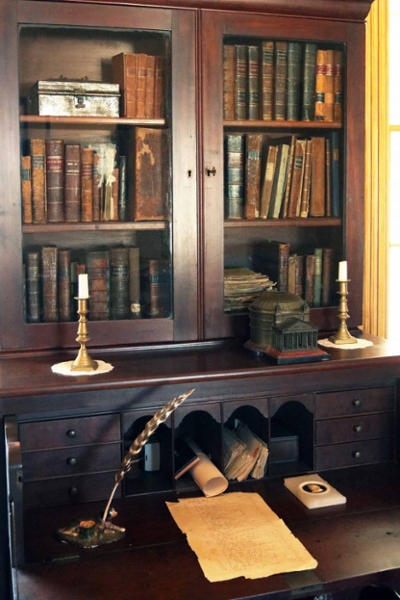
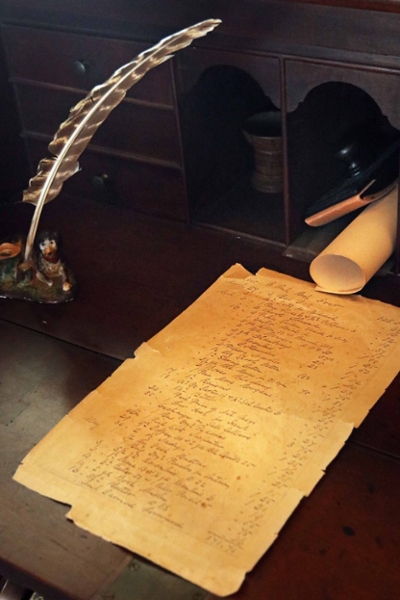
“They were essentially telling him how great they think he is and how his presence could really help them establish the school,” said Wylie Museum Director Carey Beam. “It’s interesting that they both speak to the deaths that occured in Bloomington, listing the causes as accidents, like drowning, or congestive heart failure, basically highlighting the fact that people weren’t dying of illnesses.”
Wylie was in the middle of ongoing theological disputes between local Presbyterian groups in Pennsylvania. In 1829 he decided to resign from his presidency at Washington College, pack up his family and accept the offer to become president of Indiana College.
While serving as president, Andrew Wylie became the third faculty member of the college, teaching classes in rhetoric, Christianity, fine writing, and philosophy to all 40 enrolled students.
Wylie found the local schools surrounding the college lacking, so he created a preparatory department within the college. The very next year, in 1830, the college saw its first graduating class.
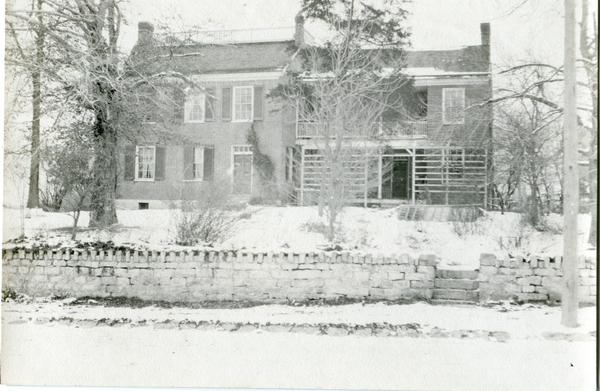
The Wylie House
In 1835, six years after arriving in Bloomington, Wylie began constructing a home for his family. He purchased 20 acres of land on top of a hill that overlooked the college at the time.
Wylie built a two-story brick house in a mix of Georgian and Federal styles; considered old fashioned and uncommon even then. The house sat on a limestone base and the facade featured a Flemish bond brick pattern thought to have been sourced from clay on the property.

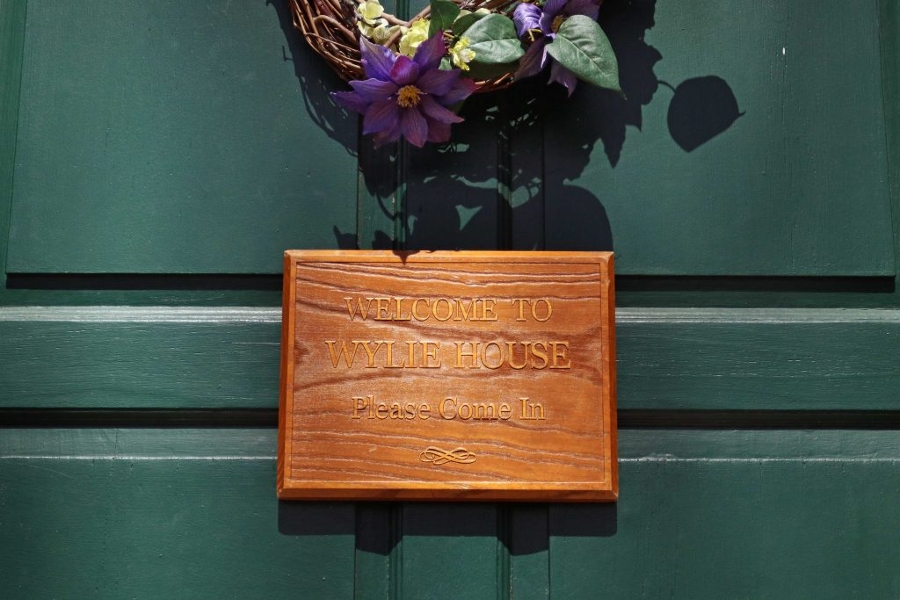
The house was the centerpiece of the property, surrounded by numerous outbuildings like a smokehouse, double-pen barn, carriage house, utility building, chicken coop and everything else needed for a self-sustaining farm in the early 1800s.
Fewer than 1,000 people lived in Bloomington at this point so domestic servants weren’t easy to come by. It would still be 20 years before the railroad pushed through providing resources from the east, so big families were common and usually necessary to maintain the land and household.
Andrew and Margaret arrived to the town with their nine children and had three more after settling. All five girls and seven boys survived into adulthood, which was extremely rare for the time period. Margaret Wylie is credited with the successful health of the family.
“As a family nurse she kept things clean,” said Carey Beam. “There are references to her washing the walls, the baseboards, and even a letter mentioning her as the only one who does the dishes.”
One particular gem in the Wylie house is a rocking chair that was used by Margaret with her 12 children. The fabric has been reupholstered but the small wooden structure is still in mint rocking condition despite its 200 year-old age.
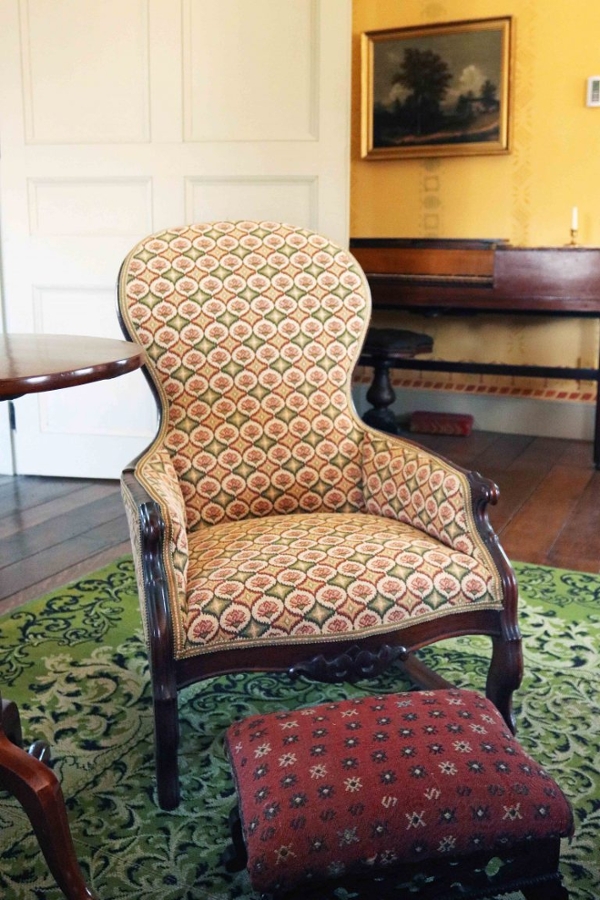
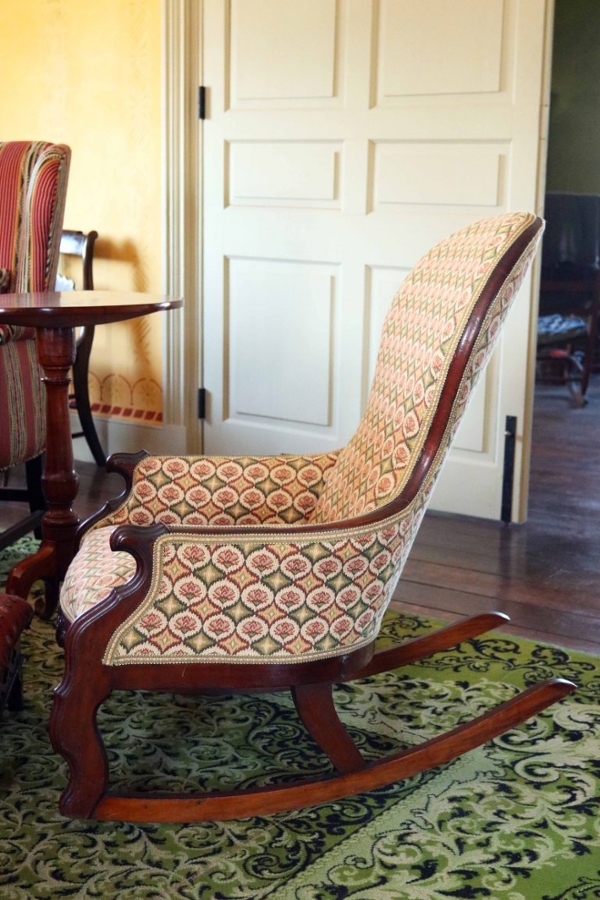
Indiana University
Wylie had kept in touch with his cousin, Theophilus, who was back home in Pennsylvania. In 1837 Wylie convinced him to move to Bloomington to teach mathematics, natural philosophy, and chemistry at Indiana College.
One year later, in 1838, state lawmakers recharted the college as Indiana University and by 1842, University President Andrew Wylie had established the law department that would eventually become the School of Law almost 60 years later.
After having been an ordained Presbyterian minister for almost 30 years, Wylie decided to leave the church 1841. He claimed to have ongoing conflicts with other Presbyterians over the Calvinist theory. He left to serve as a deacon in the Protestant Episcopal Church and by 1842 he became the ordained priest for his new church.
In 1851, at age 62, Wylie injured his leg in a wood-chopping accident. He was carried home and nursed, but his 22 years as university President came to an end with his passing.
Theophilus Adam Wylie
Theophilus Wylie, his wife Rebecca Dennis of Germantown, PA, and their six surviving children, lived in a series of rental houses near the college until Margaret’s death in 1859 left the Wylie house vacant.
Theophilus purchased five out of the 20 acres that surrounded the house and moved his family in. Andrew Wylie’s tradition of taking in boarding students was upheld by his cousin and due to the thriving university, servants became more available keeping the house busy once again.
The arrival of a train through Bloomington in 1853 made goods from the east coast much more accessible out west. This made life easier for Theophilus, a “city boy” from Pennsylvania who didn’t have much interest in farming.
Theophilus enjoyed exploring new technologies. His passion for photography allows us to see the photographical documentation and unique depiction of what life looked like at the Wylie house during his time. The widow’s walk on top of the roof provided the perfect location for him to star gaze through his telescope.
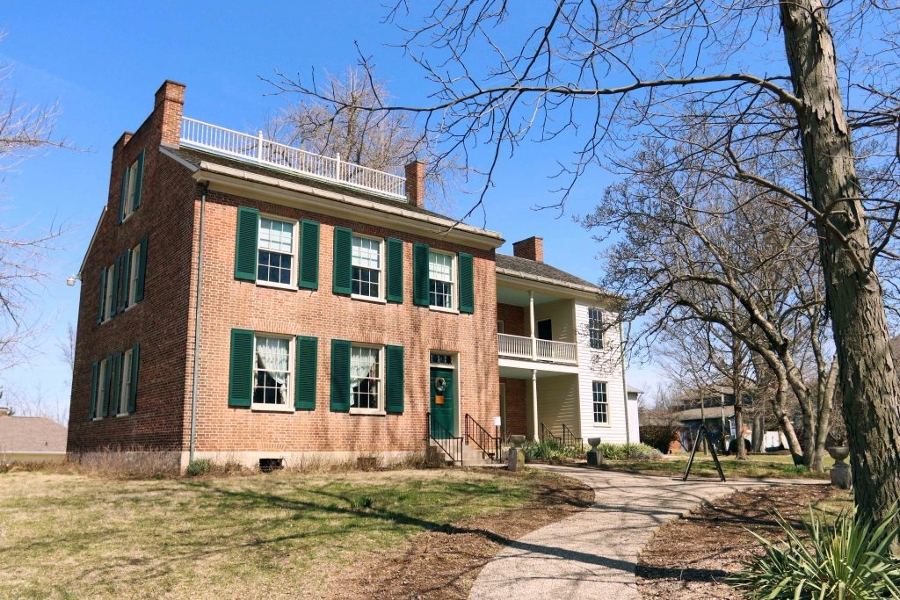
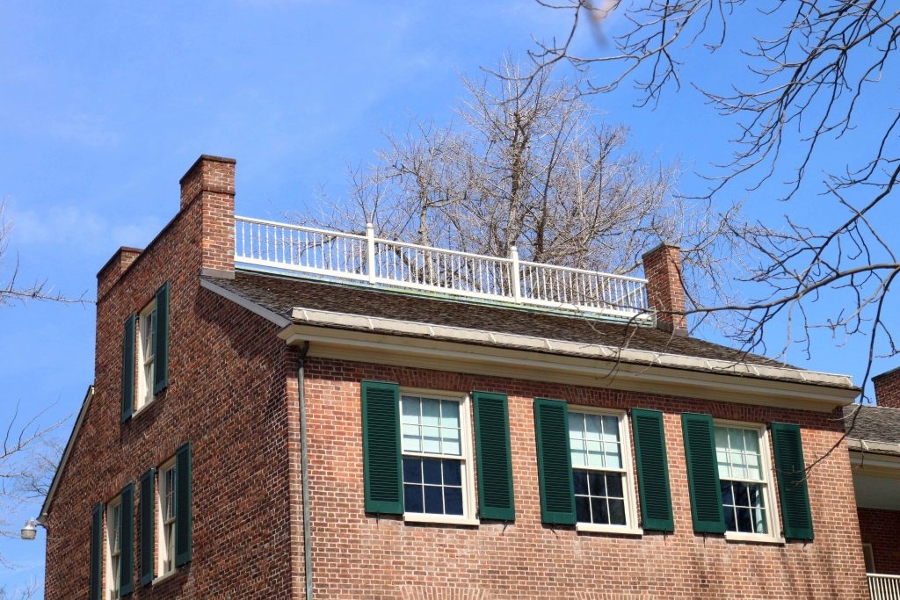
As a University professor, Theophilus spent a lot of time just down the hill at the campus lab. In 1876 he installed what is believed to be the first telephone in Indiana; it ran between the Wylie house and laboratory building.
Theophilus was an active faculty member of Indiana University until 1886. The school gifted him a tea set to commemorate the time he served. He died in 1895 at the age of 85 and his wife, Rebecca, continued to live in the house until her death in 1913.
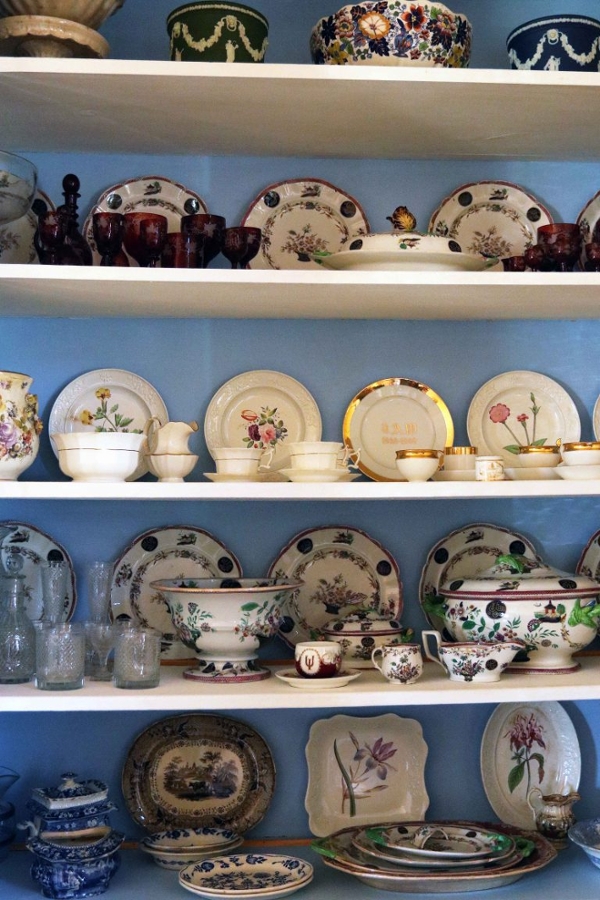
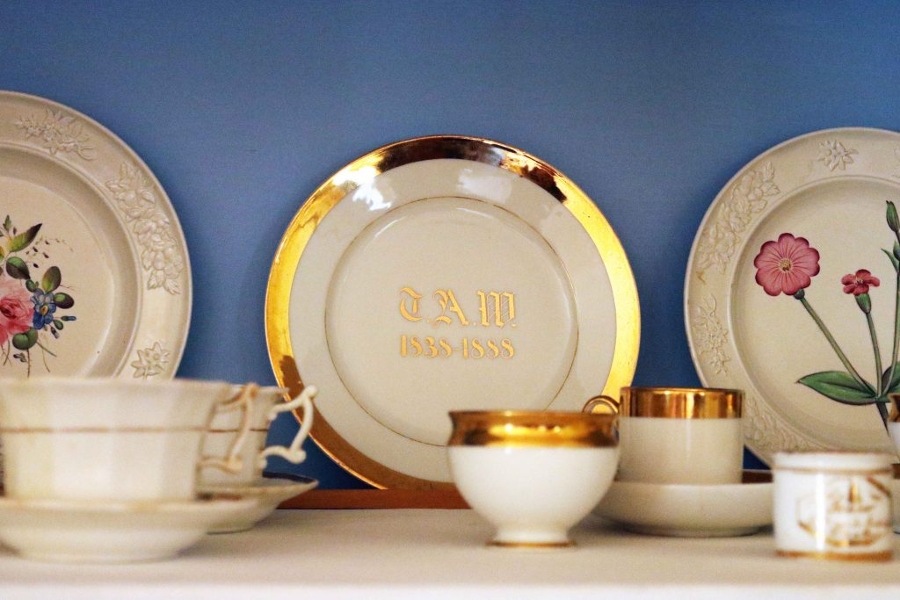
Hersheys in the Wylie House
In 1915, Political Science Professor Dr. Amos Hershey bought the house from the Wylie heirs. He and his wife, Lillian, were both antique collectors. Despite having an appreciation for old things, they modernized several parts of the house while they lived there.
The kitchen was updated, bathrooms were installed, a furnace was added, awnings were put over the doors, pantries were removed, the first-story front porch was screened in, and the door to the second-story porch was enclosed.
Herman B. Wells
In 1947, Indiana University President Herman B. Wells saw the importance of the old Wylie House and its historical connection with the university. He sought to acquire it on behalf of the school.
The purchase was successful and although Amos Hershey had already passed away, Lillian continued to live in the house, while owned by the university, until her death in 1951.
For the next eight years the Wylie house would be used as the university’s printing press, but by 1959 certain structures in the house needed attention and the university was forced to take a look at what the future might hold for the Wylie House.
Going Back in Time
From 1960 to 1965, major renovations were aimed to restore the integrity of the original structure. In an effort to take the home back to the 1800s, all new additions and features were removed and replaced.
With the exception of rebuilding the second-story porch entrance, the renovations done by the Hershey’s were reversed. Unfortunately, it was discovered much later that the removal of a back porch, previously thought to have been added after 1835, was actually original to the home.
Wylie House Today
Restorations are still being done today to fully convert the old house back into its historically accurate former glory. The back porch has been rebuilt and plans are in motion to demolish the wall at the top of the stairs to add the porch door.

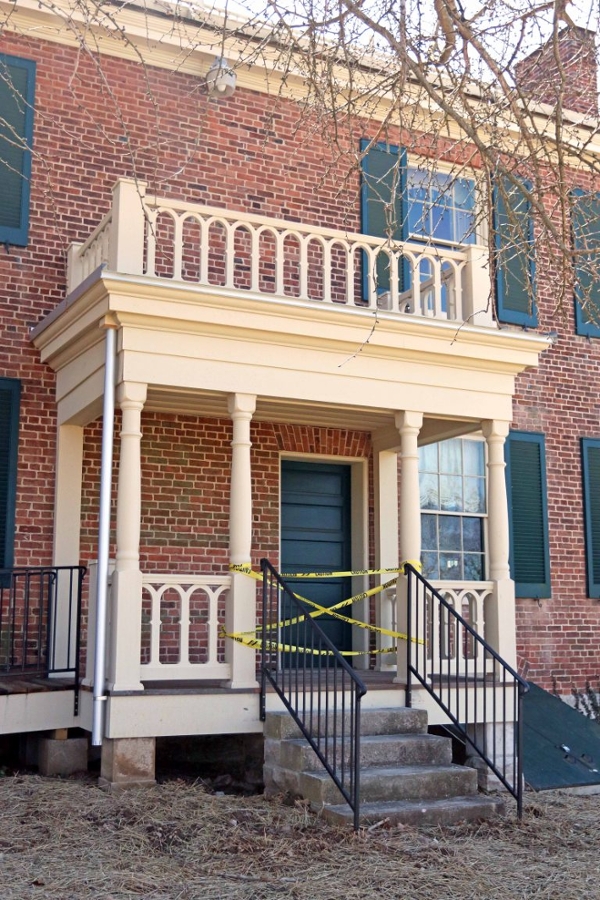
The small garden in the backyard is filled with everyday plant life that the Wylies utilized and is maintained through old-fashioned gardening methods. The biggest feature is a wooden structure, built during Andrew Wylie’s time, which still holds the very same grapevine plant from the mid 1800s.
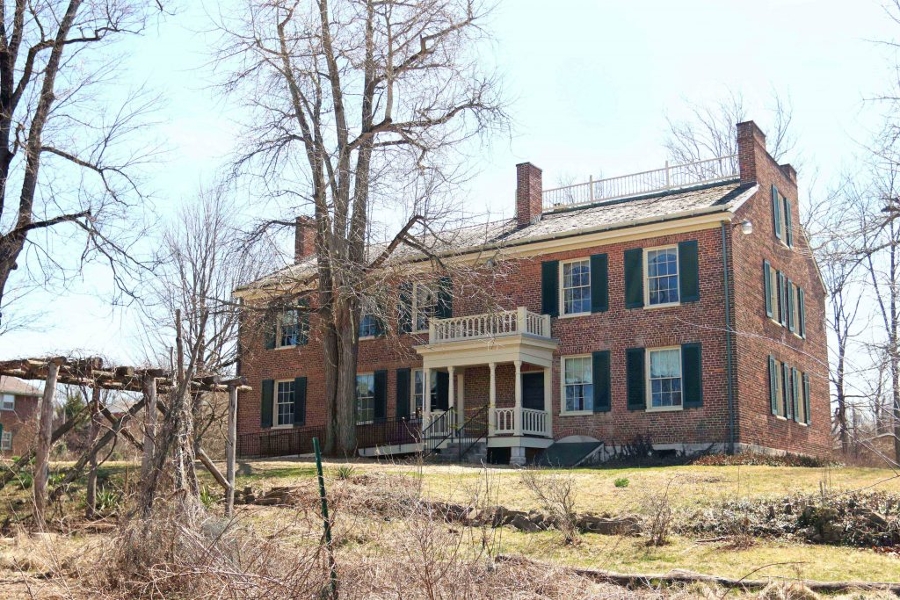
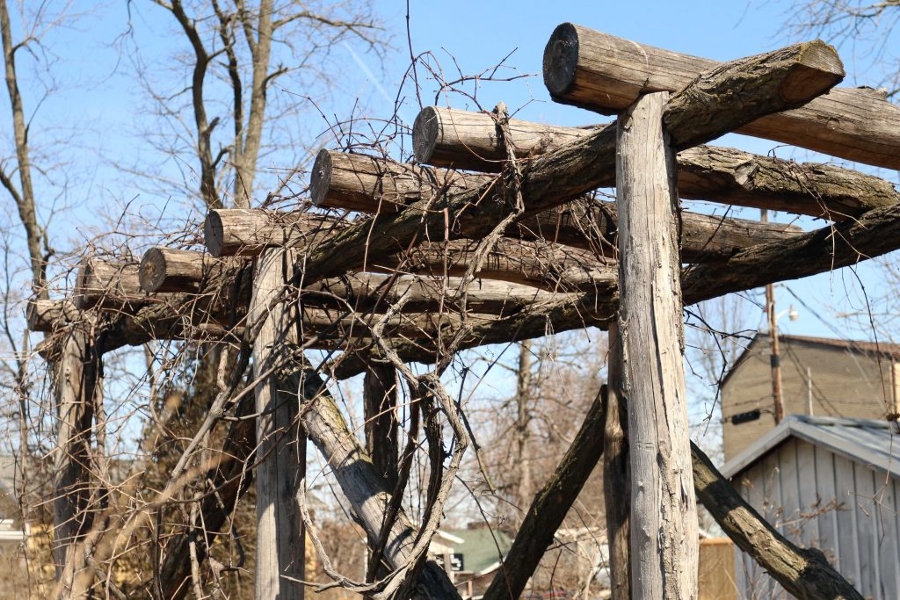
Photographs, paintings, letters and books flood the space with depictions of what life here used to be like.
“We have been so fortunate to have so many items from the Wylie family returned to us over time,” said Carey Beam. “Not many house museums have belongings that were true to the home from that time period.”
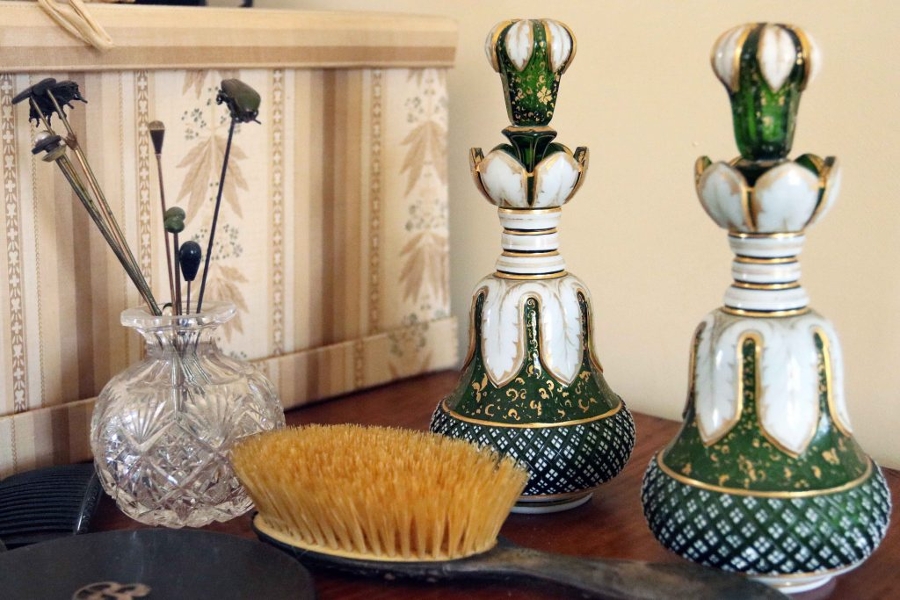
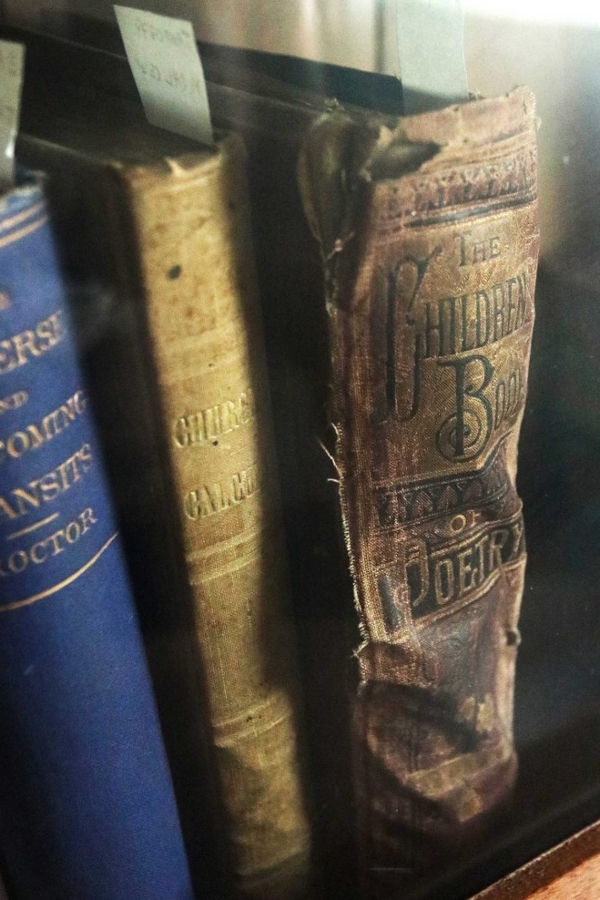
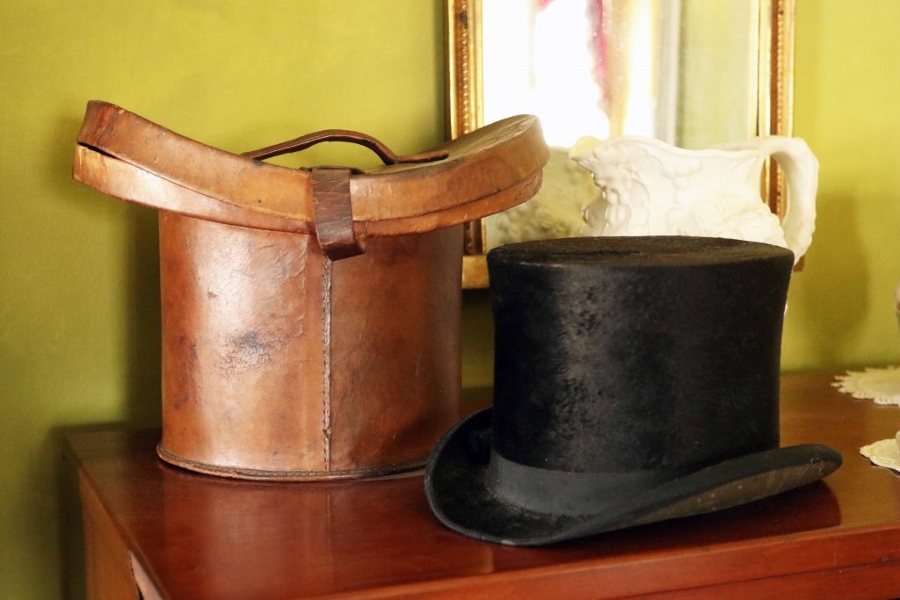
Museum tours are available Tuesday through Saturday from 10 a.m. to 2 p.m. and are always free. Meet your tour guide in the renovated barn next door and browse through the house that helped shaped what Bloomington is today.
